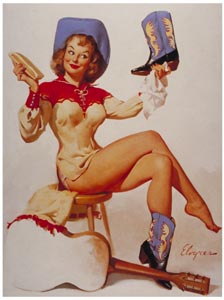
|
FIND
SEXY PINUP GIRL CLIP ART!
|
Pinup Girls

Pinup Girls and Classic Pinups. Gifts decorated with classic bombshells and nose art of World War II in the classic styles of the 30's, 40's and 50's including posters from such noted artists as Alberto Vargas, Gil Elvgren and Al Moore.

Al Moore Pinup Girl Posters

Al Moore Pinup Girl Posters

Al Moore Pinup Girl Posters

Easy To Spot - Harry Ekman

Al Moore Pinup Girl Posters

Al Moore Pinup Girl Posters

Al Moore Pinup Girl Posters

Classic Pinup

Al Moore Pinup Girl Posters

Al Moore Pinup Girl Posters

Al Moore Pinup Girl Posters

Classic Pinup

Gil Elvgren Pinup Girl Posters

Classic Pinup Girl Posters

Classic Pinup Girl Posters

Classic Pinup

Classic Pinup Girl Posters

Classic Pinup Girl Posters

Classic Pinup Girl Posters

Classic Pinup

Classic Pinup Girl Posters

Classic Pinup Girl Posters

Classic Pinup Girl Posters

Classic Pinup

Classic Pinup Girl Posters

Classic Pinup Girl Posters

Classic Pinup Girl Posters

Classic Pinup


Al Moore Pinup

Al Moore Pinup

Al Moore Pinup

Classic Pinup

Al Moore Pinup

Al Moore Pinup

Al Moore Pinup

Classic Pinup

Al Moore Pinup

Al Moore Pinup

Al Moore Pinup

Classic Pinup

Al Moore Pinup

Al Moore Pinup

Al Moore Pinup

Classic Pinup

Al Moore Pinup

Al Moore Pinup

Al Moore Pinup

Classic Pinup

Al Moore Pinup

Al Moore Pinup

Al Moore Pinup

Classic Pinup

Al Moore Pinup

Al Moore Pinup

Al Moore Pinup

Classic Pinup

Al Moore Pinup

Al Moore Pinup

Al Moore Pinup

Classic Pinup

Al Moore Pinup

Al Moore Pinup

Al Moore Pinup

Classic Pinup

Al Moore Pinup

Al Moore Pinup

Al Moore Pinup

Classic Pinup

Al Moore Pinup

Al Moore Pinup

Al Moore Pinup

Classic Pinup

Al Moore Pinup

Al Moore Pinup

Al Moore Pinup

Classic Pinup

Al Moore Pinup

Al Moore Pinup

Al Moore Pinup

Classic Pinup

Al Moore Pinup

Al Moore Pinup

Al Moore Pinup

Classic Pinup

Al Moore Pinup

Al Moore Pinup

Al Moore Pinup

Classic Pinup

Al Moore Pinup

Al Moore Pinup

Al Moore Pinup

Classic Pinup

Al Moore Pinup

Classic Pinup

Classic Pinup

Classic Pinup

Classic Pinup

Classic Pinup

Classic Pinup - Alberto Vargas

Classic Pinup

Classic Pinup

Classic Pinup

That Low Down Feeling, 1957 - Gil Elvgren

Classic Pinup

Classic Pinup

Classic Pinup

Classic Pinup

Classic Pinup

Classic Pinup

Classic Pinup

Classic Pinup

Classic Pinup

Classic Pinup

Classic Pinup

Classic Pinup

Classic Pinup

Classic Pinup

Classic Pinup

Classic Pinup

Classic Pinup

Classic Pinup

Classic Pinup

Classic Pinup

Classic Pinup

Classic Pinup

Classic Pinup

Classic Pinup

Classic Pinup

Classic Pinup

Classic Pinup

Classic Pinup

Classic Pinup

Classic Pinup

Classic Pinup

Classic Pinup

Classic Pinup

The Right Touch, 1958 - Gil Elvgren

Look Out Below, 1956 - Gil Elvgren

Classic Pinup

Classic Pinup

Classic Pinup

Classic Pinup

Classic Pinup

Classic Pinup

Classic Pinup

Classic Pinup

Classic Pinup

Classic Pinup

Classic Pinup

Classic Pinup

Classic Pinup

Classic Pinup

Classic Pinup

Classic Pinup

Classic Pinup

Classic Pinup

Classic Pinup

Classic Pinup

Classic Pinup

Classic Pinup

Cowgirl Pinup

Classic Pinup

Classic Pinup

Classic Pinup

Classic Pinup

Classic Pinup

Classic Pinup

Classic Pinup

Classic Pinup

Classic Pinup

Classic Pinup

Classic Pinup

Classic Pinup

Classic Pinup

Classic Pinup

Classic Pinup

Classic Pinup

Classic Pinup

Classic Pinup

Classic Pinup

Classic Pinup

Classic Pinup

Cowgirl Pinup

Classic Pinup

Classic Pinup

Classic Pinup

Classic Pinup

Classic Pinup

Classic Pinup

Classic Pinup

Classic Pinup

Classic Pinup
|
|




